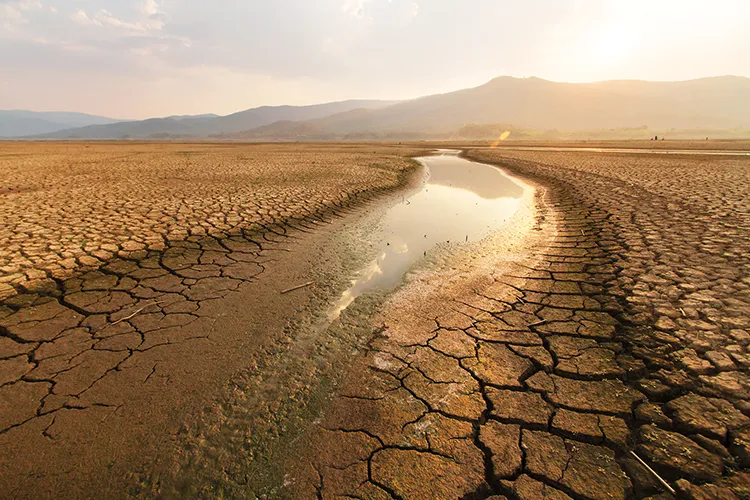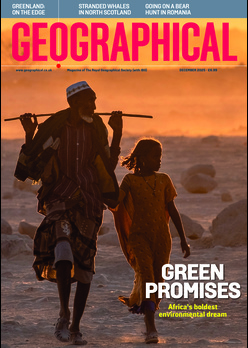

Geopolitical Hotspot
Tim Marshall examines why water is fast becoming a trigger for conflict, from South Asia to the Middle East – and why climate change is raising the stakes
The term ‘water wars’ is making a comeback, propelled by India’s threat to cut Pakistan’s water supply from rivers that flow through India-controlled Kashmir before reaching Pakistan. The confrontation is one of many around the world based on water resources – tensions that will become more pronounced as climate change and population growth fuel competition. There’s renewed focus on the issue, but the problem is as old as humanity.
The first recorded example dates back to two ancient Sumerian city-states – Umma and Lagash – which went to war in 2500 BCE in a dispute over water and irrigated lands, fighting for 100 years. In 225 BCE, the Qin army in China diverted the Yellow River, flooding Daliang and killing 100,000 people; in 1258, the Mongols broke the levees of a canal to flood the Abbasid army’s camp, clearing the way for an attack on Baghdad.
Fast forward to the Dambusters raid in 1943 and we see that water is a constant – both as a potential cause of conflict and as a weapon of war. The modern example of Pakistan is typical of the challenges many countries face today.
Agriculture is Pakistan’s main industry, but the country is classified as ‘extremely water-stressed’. Its population of roughly 250 million is projected to grow by at least another 100 million within 30 years, meaning demand for water will surge even as climate change may reduce what’s available.
This is true even without the threat from India, but if New Delhi were to launch a long-term project to divert the waters, it would become an existential issue for Pakistan. Under the 1960 Indus Waters Treaty, Pakistan has rights over three rivers that pass through Indian-controlled Kashmir before entering Pakistan – the Indus, Chenab and Jhelum. India can use some of the water, but must not significantly alter the flow. The Indus basin supports about 90 per cent of Pakistan’s agricultural activity and provides most of its drinking water. The heavily populated Punjab region is particularly reliant on what are known as the ‘Indus waters’. Indeed, the word Punjab comes from the Persian words panj (five) and ab (waters), referring to the five tributaries of the Indus.
Subscribe to Tim Marshall’s Substack here: https://substack.com/@itwitius
If India were to carry out its threat, it would be a gamble. Not only would it be a casus belli, but it could set a precedent that China (an ally of Pakistan) might follow.
New Delhi has its own territorial tensions with China – among them the transboundary Brahmaputra River, which supplies about 30 per cent of India’s freshwater. Its source is Mount Kailash in Tibet (also the source of the Indus), where it’s known as the Yarlung Tsangpo, before flowing into India and merging with the Ganges in Bangladesh. The river has vast hydropower potential, and China is building a colossal dam capable of generating 60 gigawatts of power – three times the capacity of the Three Gorges Dam. If Beijing chooses, the project could reduce the water both India and Bangladesh receive. Blocking sediment flows would also reduce soil fertility, severely affecting agriculture.
In that event, India would likely then restrict water flows to Bangladesh. The two countries are already locked in a dispute over the Ganges, which forms a 129-kilometre shared boundary before fanning out into the Ganges Delta and emptying into the Bay of Bengal. The 1996 Ganga Water Treaty expires next year, and Bangladesh insists it must have a greater share of water under a new agreement.
Enjoying this article? Check out more geopolitics by Tim Marshall…
But a greater share of how much? Snow levels in ‘The Third Pole’, as the Himalaya are sometimes called, have dropped dramatically in recent years, and there is a decline in what is known as ‘snow persistence’ – the time before it melts.
These are challenges mirrored around the world. Syria and Iraq suffer severe water shortages because Turkey has built dams along the Euphrates and Tigris rivers. The three nations almost came to blows over the issue in 1975 and the situation has worsened since. Ethiopia and Egypt remain at daggers drawn over the Grand Ethiopian Renaissance Dam, which Addis Ababa has built on the Nile, effectively putting its hand on the tap of Egypt’s lifeblood. As long ago as the fifth century BCE, Herodotus wrote: ‘Egypt is the Nile, and the Nile is Egypt’. Cairo knows this truth well and has hinted it’s prepared to go to war over it.
A more modern commentator, Mark Twain, put it another way: ‘Whisky is for drinking. Water is for fighting over.’




